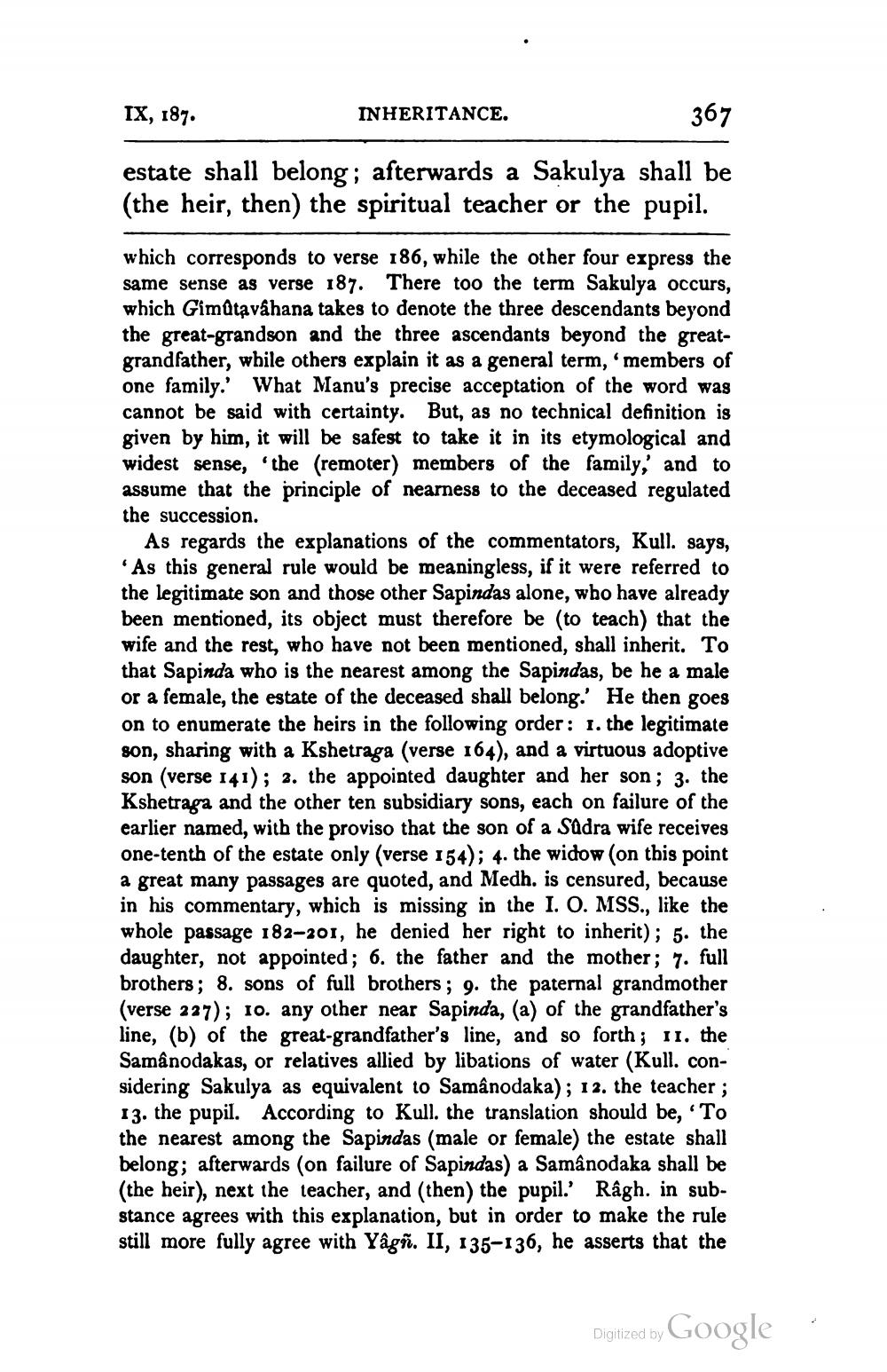________________
IX, 187.
INHERITANCE.
367
estate shall belong; afterwards a Sakulya shall be (the heir, then) the spiritual teacher or the pupil.
which corresponds to verse 186, while the other four express the same sense as verse 187. There too the term Sakulya occurs, which GimQtavahana takes to denote the three descendants beyond the great-grandson and the three ascendants beyond the greatgrandfather, while others explain it as a general term, members of one family' What Manu's precise acceptation of the word was cannot be said with certainty. But, as no technical definition is given by him, it will be safest to take it in its etymological and widest sense, 'the (remoter) members of the family, and to assume that the principle of nearness to the deceased regulated the succession.
As regards the explanations of the commentators, Kull. says, *As this general rule would be meaningless, if it were referred to the legitimate son and those other Sapindas alone, who have already been mentioned, its object must therefore be (to teach) that the wife and the rest, who have not been mentioned, shall inherit. To that Sapinda who is the nearest among the Sapindas, be he a male or a female, the estate of the deceased shall belong.' He then goes on to enumerate the heirs in the following order: 1. the legitimate son, sharing with a Kshetraga (verse 164), and a virtuous adoptive son (verse 141); 2. the appointed daughter and her son; 3. the Kshetraga and the other ten subsidiary sons, each on failure of the earlier named, with the proviso that the son of a Sadra wife receives one-tenth of the estate only (verse 154); 4. the widow (on this point a great many passages are quoted, and Medh. is censured, because in his commentary, which is missing in the I. O. MSS., like the whole passage 182-201, he denied her right to inherit); 5. the daughter, not appointed; 6. the father and the mother; 7. full brothers; 8. sons of full brothers; 9. the paternal grandmother (verse 227); 10. any other near Sapinda, (a) of the grandfather's line, (b) of the great-grandfather's line, and so forth; 11. the Samânodakas, or relatives allied by libations of water (Kull. considering Sakulya as equivalent to Samânodaka); 12. the teacher ; 13. the pupil. According to Kull. the translation should be, 'To the nearest among the Sapindas (male or female) the estate shall belong; afterwards (on failure of Sapindas) a Samânodaka shall be (the heir), next the teacher, and (then) the pupil.' Râgh. in substance agrees with this explanation, but in order to make the rule still more fully agree with Yagñ. II, 135-136, he asserts that the
Digitized by Google




